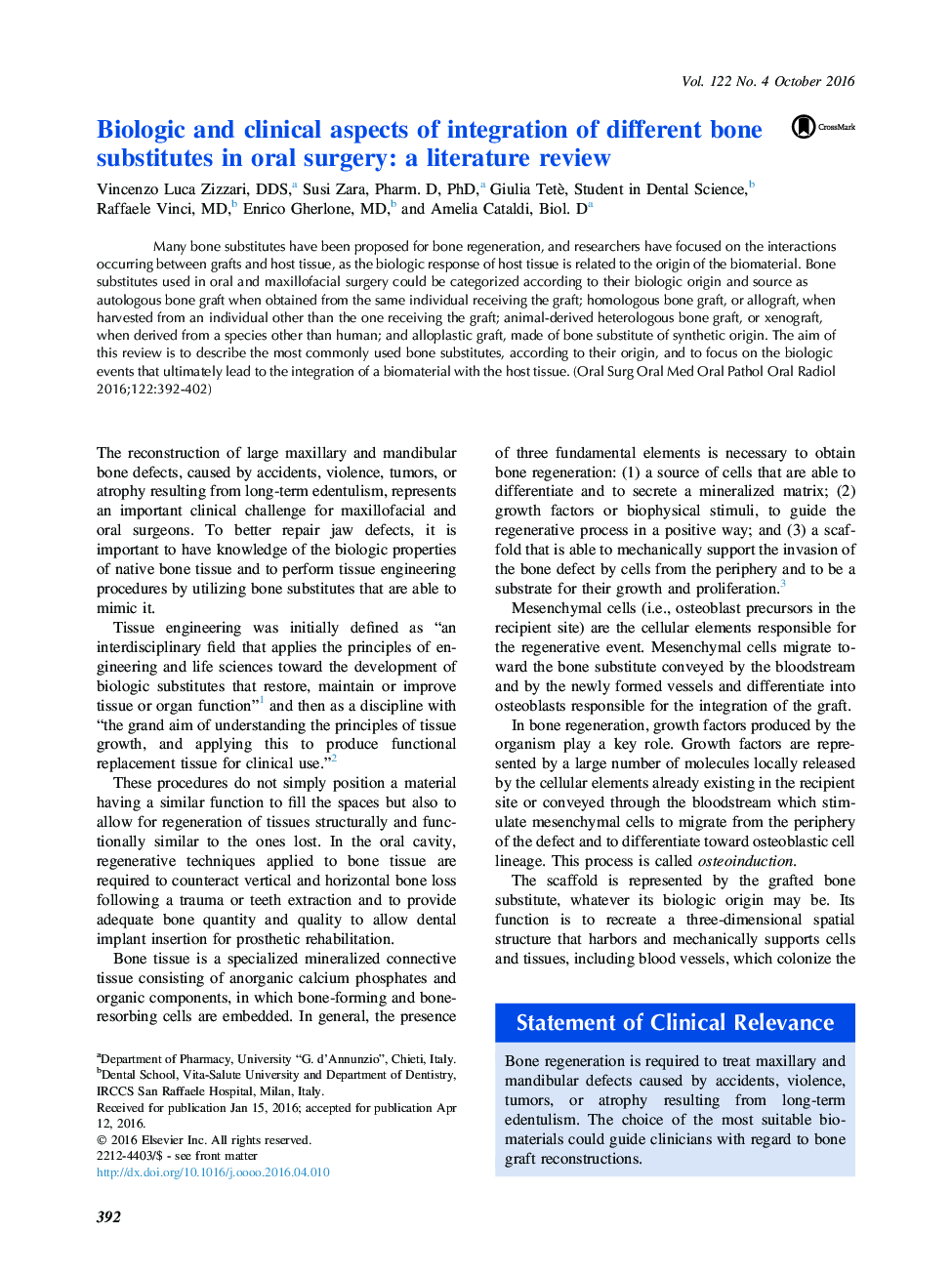| Article ID | Journal | Published Year | Pages | File Type |
|---|---|---|---|---|
| 3166286 | Oral Surgery, Oral Medicine, Oral Pathology and Oral Radiology | 2016 | 11 Pages |
Many bone substitutes have been proposed for bone regeneration, and researchers have focused on the interactions occurring between grafts and host tissue, as the biologic response of host tissue is related to the origin of the biomaterial. Bone substitutes used in oral and maxillofacial surgery could be categorized according to their biologic origin and source as autologous bone graft when obtained from the same individual receiving the graft; homologous bone graft, or allograft, when harvested from an individual other than the one receiving the graft; animal-derived heterologous bone graft, or xenograft, when derived from a species other than human; and alloplastic graft, made of bone substitute of synthetic origin. The aim of this review is to describe the most commonly used bone substitutes, according to their origin, and to focus on the biologic events that ultimately lead to the integration of a biomaterial with the host tissue.
